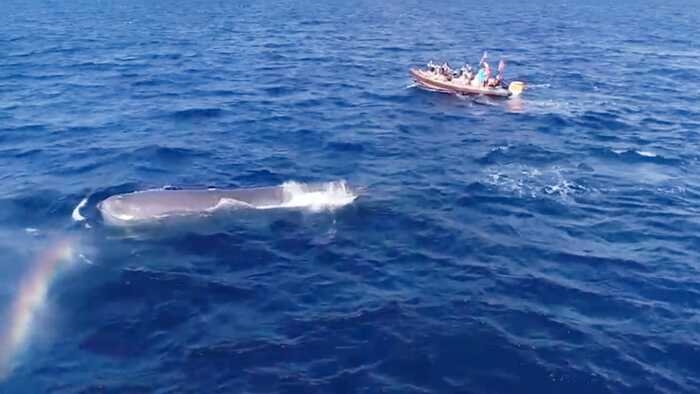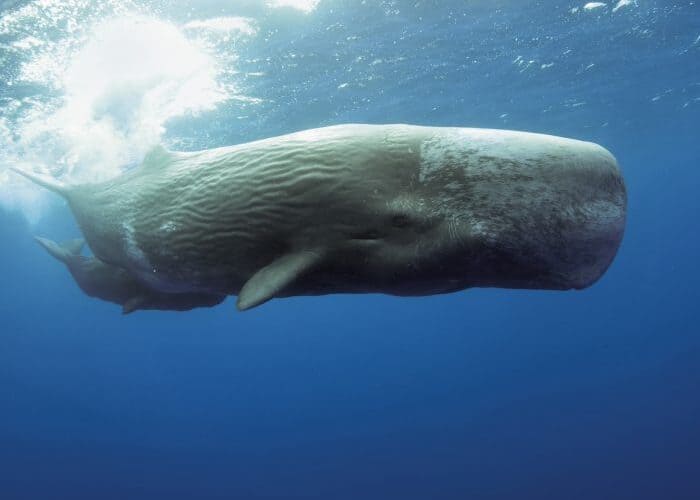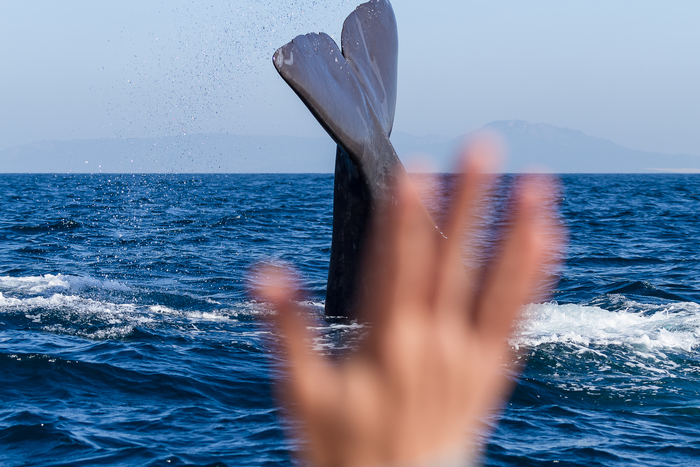
Physeter macrocephalus
Sperm Whales
Sperm whales, also known as cachalots, are renowned for having the largest brains among marine mammals. These majestic creatures have captivated scientists and the general public for generations.


Size and Impressive Appearance
Sperm whales boast enormous bodies and distinctive heads. They can dive to great depths and remain submerged for extended periods.

Social Structure
They operate in groups, and social bonds are strong, particularly among females and their calves. Communication occurs through a variety of sounds and clicks.

Feeding Habits
Their diet is varied, encompassing octopuses, squid, and even sharks. They are efficient predators and hunt at extreme depths.

Presence of Sperm Whales in the Strait of Gibraltar
The Strait of Gibraltar is a crucial location for spotting sperm whales due to its rich marine diversity.

Rich Ecosystem
Sperm whales travel through the Strait of Gibraltar as part of their seasonal migrations in search of food and mating opportunities.

Migration Routes
The marine currents and geophysical characteristics of the Strait provide a conducive environment for the presence of sperm whales.

Optimal Conditions
Reasons for Their Presence in This Area
Abundance of Food
The Strait of Gibraltar is a crucial feeding ground for sperm whales due to the diversity and abundance of available prey.
Migration and Rest
It provides suitable conditions for sperm whales to rest during their long migratory journeys between the Atlantic and the Mediterranean.
Unique Oceanographic Conditions
The currents and underwater topography of the Strait of Gibraltar are ideal for many marine species, including sperm whales.

